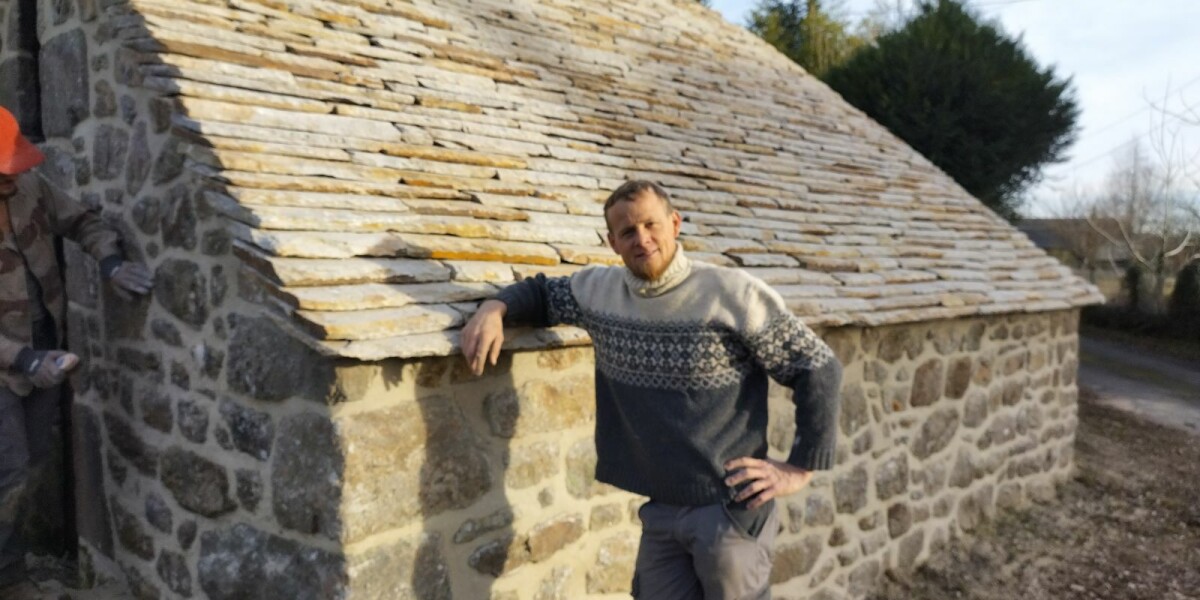
- Select a language for the TTS:
- UK English Female
- UK English Male
- US English Female
- US English Male
- Australian Female
- Australian Male
- Language selected: (auto detect) - EN
Play all audios:
Any Connexion readers driving along the departmental roads of Barbazan, Frontignan-de-Comminges and Antichan-de-Frontignes in Haute-Garonne may spot Sébastien Heurtevent busy doing his
unusual job. Mr Heurtevent is an artisan murailler de pierres sèches, a dry-stone waller and roofer, whose company, Range Cailloux, is the first dry-stone walling company to have won a
valuable public call for tenders. He was commissioned to work on all the walls along roads in Haute-Garonne, and currently works on four different sites in the Saint-Gaudens area. Please
beep your horn or stop to have a look, because this is how Mr Heurtevent’s adventure in dry-stone walling first began 10 years ago. While he was building his first wall – in his garden that
overlooked the village road of Strenquels (Lot) – drivers would stop by to congratulate him. Read more: Heritage groups preserve the French art of resin extraction IN-DEMAND CRAFT A
neighbour became his first customer, which snowballed into a waiting list of clients and a growing number of employees. Mr Heurtevent is a trained bricklayer who worked for 14 years for his
father’s masonry company. During this period, he said, no one would bat an eyelid at his work. The financial crisis of 2008 made him realise the building sector’s dependence on big
companies, particularly when it comes to supplying materials. He wanted to escape it. “I was looking for a purpose, and I had come full circle with my job. It did not interest me anymore,”
he said. He found a free source of stones in the Cayroux, a mountain site in Hérault where agriculture firms used them to cover dumped waste, brought them back home and started working on
his garden wall. GEOMETRY IN ACTION One great attraction of dry stone walling was the simplicity – no need for cement, breeze blocks or bricks. All that was required was the stone itself. Mr
Heurtevent works mainly with limestone. Holding it together, however, is another skill entirely. As a trained mason, Mr Heurtevent built walls horizontally until he figured out that dry
stones required different treatment. He realised you had to think in terms of geometry, gauging stones by their angles and shapes, how each one would respond to being cut, and whether or
not they would align. “The eye works more than the hand,” he said, meaning that you first have to figure out which stone fits, rather than carrying it to a site like a mason would. “It is
about treating a pile of stones as geometry.” He built his own garden borie, a dry-stone cabin, in 2014, before receiving more and more commissions from clients. These included a dry-stone
wall in Cazillac (Lot), supporting walls in Rocamadour (Lot) and a cazelle (shepherd’s shelter). Walls built with dry stones have great absorbency, which stabilises the ground on which they
are built. This makes them very useful and reliable for farmers. They also provide homes for many creatures, and so are a good choice for biodiversity. Read more: French crafts in focus:
Chaudronnier DRY STONE ARTISANS Mr Heurtevent admires the dry-stone working community, which he says is full of modest people who take pride in their work and who value collective, rather
than individual, effort. The Connexion initially reached out to another dry stone artisan, who said he did not wish to be put under the spotlight. He admitted that this discreet attitude is
common for dry-stone workers. Mr Heurtevent himself is well respected in the trade. “He’s easy to get along with, not austère, very friendly, outgoing and a nice person to work with,” said
Cathie O’Neill, former director of the Artisans batisseurs en pierres sèches (Abps) association. Mr Heurtevent is now one of the most visible faces of dry-stone building, a craft which is
becoming increasingly popular. He is unusual in being one of around 16 to 18 dry-stone artisans who works on both walls and roofs. He is a member of Abps, Artisans Lauziers Couvreurs and the
Fédération Française des Professionnels de la Pierre Sèche, the union for dry-stone workers, and has a diploma to show his credentials as a skilled dry-stone worker. CRAFT COURSES Readers
interested in learning the craft can follow in Mr Heurtevent’s footsteps by enrolling at the training school where he graduated, in Saint-Andéol-de-Clerguemort (Lozère). Students from all
walks of life are welcomed, and Mr Heurtevent hopes this will help change attitudes towards dry-stone building. His company, Range Cailloux, now has six employees. He works with a former
barman, a railway worker, and a former yoga teacher. He has also trained a former nursing assistant and employees of the state body Monument historique. “I do not know where this adventure
will take me,” he said, “but I like to think that we do happy work.”








